This Is How You Should Declutter Your Whole Home (Room by Room)
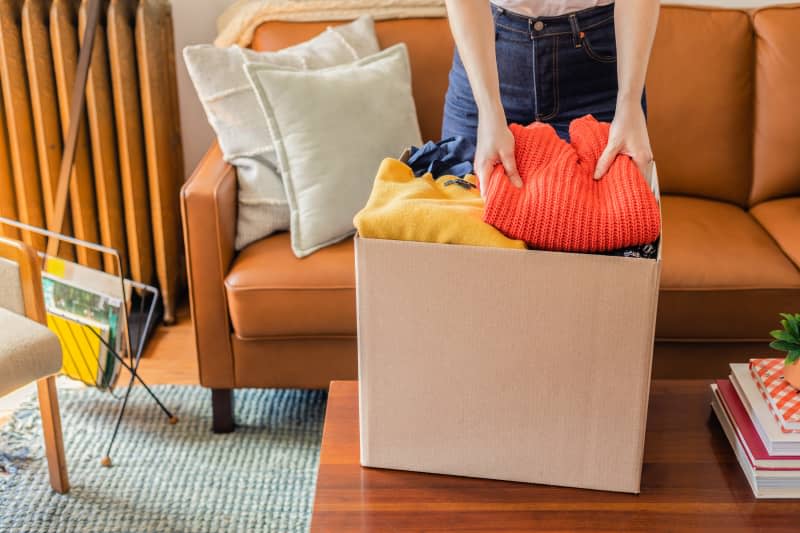
Decluttering your entire home is no small feat, but the rewards extend far beyond merely the visual satisfaction of seeing your newly organized spaces. A decluttered space that contains only what you need and love affects how you feel and operate in your home. Clearing clutter reduces visual input and the sense of being surrounded by undone tasks. Additionally, removing extraneous items from your space makes it easier to see, use, and even clean what’s left. In short, decluttering leads to a more peaceful home, and knowing how to declutter in the best way is so important.
Accumulating clutter is easy and it happens without you realizing it, but it’s also probably taken years for your home to reach its current condition. It’s important to be realistic about how long a whole-house decluttering project can take — both to keep from getting discouraged and to stay motivated along the way.
Here are some tips for how to get started, how to make your way through a decluttering marathon room-by-room, and some general pointers to keep in mind along the way.
Table of Contents
How to Start Decluttering
Decluttering involves a great deal of mental and emotional energy. Setting yourself up for success involves not only having the right tools in hand, but also coming into the project with a plan. Considering the pitfalls and hiccups before diving into the project ensures that you won’t get stalled when you encounter, for instance, a gift from a former coworker or when you find yourself in a huge mess without the energy to move on to the next phase. Additionally, getting yourself into the right headspace before you start is crucial to maintaining the momentum you need to get the job done.
“The first step before we get into the thick of things is to visualize how you want your home to look,” recommends Kim Jones, the founder and CEO of organizing firm Lock and Key Home. “Imagine waving a magic wand and your dreams becoming a reality. What would that look like? How would you feel? Are you smiling just thinking of it? Write all of this down so you can refer back to it.”
Jones also suggests employing the power of the proverbial spoonful of sugar: “It is also really important to know what motivates you,” she says, “For me, I am more productive with a cup of coffee and some ‘90s rap on full-blast. For others, it may be the complete opposite. It is important to know what gets you moving and pumped up so you are prepared to conquer.”
Sarit Weiss, founder and lead organizer of Neat and Orderly Home Organizing, offers some practical suggestions for gearing up for a decluttering marathon: Create a schedule and give yourself a deadline. “Whether you plan to declutter in one day or over a week, having a schedule ensures you allocate dedicated time for each room or area. This approach makes the process more systematic and less overwhelming,” Weiss explains, adding that a schedule can help break the project down into bite-size pieces.
“You don’t have to put in a whole day of decluttering. Setting aside an hour or two each day, or even each week can help you reach your decluttering goals.”
A deadline keeps the project from dragging on indefinitely. “For those who work well with deadlines, set a realistic deadline to complete the decluttering process,” suggests Weiss. “This adds a sense of urgency and helps maintain focus.” Your deadline is flexible and can be set around what works for you.
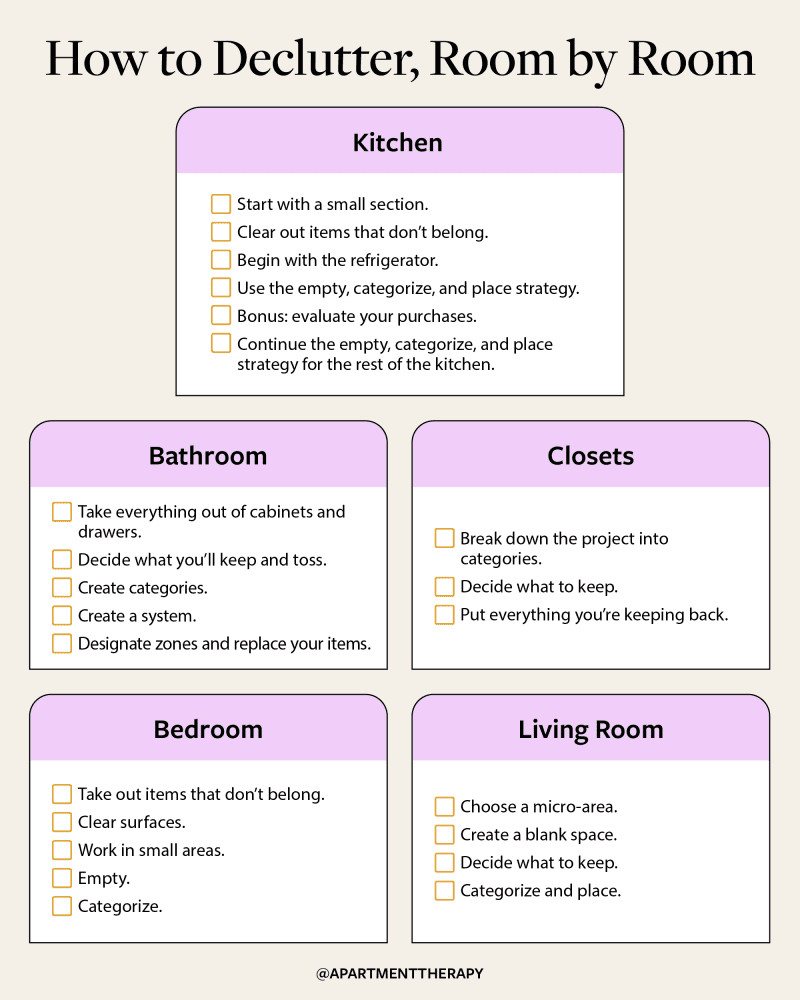
How to Declutter Your Home, Room by Room
Below, a guide to decluttering your whole home, room by room.
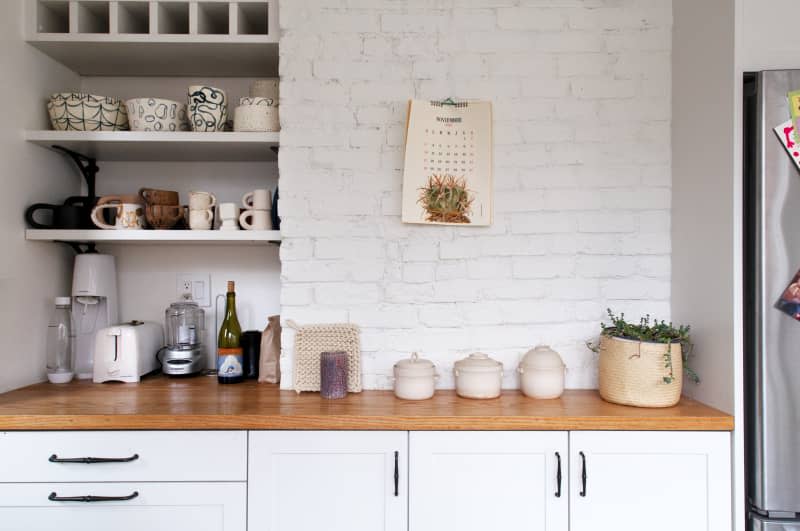
Kitchen
Decluttering the kitchen has a huge impact on how your home functions. It’s very much the “hub of a home,” shares Jones, adding that it’s where you spend the most time (and not just eating and cooking!) and where your guests congregate. That’s why it should be the first place to start, shares Jones, not only because you use it daily, but also because it is often the easiest to go through. Here’s how you’ll do it.
Start with a small section. “No need to do all of your cabinets or your whole pantry at once,” says Weiss. “Pick one micro-area, such as one drawer, one cabinet, or one shelf in your pantry, to start your decluttering process.”
Clear out items that don’t belong. Grab a laundry basket or box and quickly gather things that need to get put away somewhere else. Set this aside to do later and keep your focus on the kitchen.
Begin with the refrigerator. Jones recommends starting with the refrigerator as the first micro-area. “This will get your momentum going, as throwing out old food and empty mustard bottles takes no thought at all. Your ‘toss it’ mindset will kick in.”
Use the empty, categorize, and place strategy. For every space in the kitchen, including the refrigerator, utilize this decluttering method. For instance, once you empty the refrigerator, place everything into categories on the counter. Then, declutter by category: decide on each item, check expiration dates or see if it is still good to use, and then keep, donate, or toss what needs to go. Before placing things back in the fridge, give it a wipe-down. When putting things back, consider how you’ll arrange it, whether that’s by frequency of use or what serves you best.
Bonus: Evaluate your purchases. Jones says that this is a good time to evaluate your purchases to see what you are using and not using and make better shopping decisions moving forward.
Continue the empty, categorize, and place strategy for the rest of the kitchen. Here are some areas you can declutter: cabinets, drawers, pantry, and/or under-sink area.

Bathroom
Jones emphasizes the importance of organizing in a personalized way — especially in the bathroom. “You want your bathroom organized in a way that is conducive to your process. If you’re one of the many people who are on autopilot as they roll out of bed in the morning, you’ll want your space to be as intuitive as possible,” she points out.
Take everything out of cabinets and drawers. Jones and Weiss agree on this first step, adding that you should take things out and remove things from countertops, too.
Decide what you’ll keep and toss. It’s time to toss any expired, unsafe, or no-longer-needed items. Check the printed-on expiration dates on personal care items, as well as the symbol that tells you how long the product stays fresh once opened.
Create categories. Group items into categories and narrow down what you need and don’t need. These categories could be makeup, skincare, hair tools, medical supplies, etc. “Ensure all of the items you are categorizing and looking to store in your bathroom are items you use in the bathroom. Items that do not belong in the bathroom should be relocated,” adds Weiss.
Create a system. This will save you time, reduce stress levels, and make it easy to grab and go, shares Jones. “Visualize your routine and what you use daily, and use the top few drawers for these items. This includes toothbrushes, toothpaste, hairbrush, face wash, and cotton balls and swabs.”
Designate zones and replace your items. After you’ve thought through your system, designate zones for each category of items. “Dedicate a zone in your vanity for each category of items,” says Weiss. “The vanity may seem small, but you can always maximize space by adding stacking bins. This will help you store more of your essentials in the vanity.” Bins are useful for maintaining your zones, and risers can maximize space on countertops and inside cabinets.
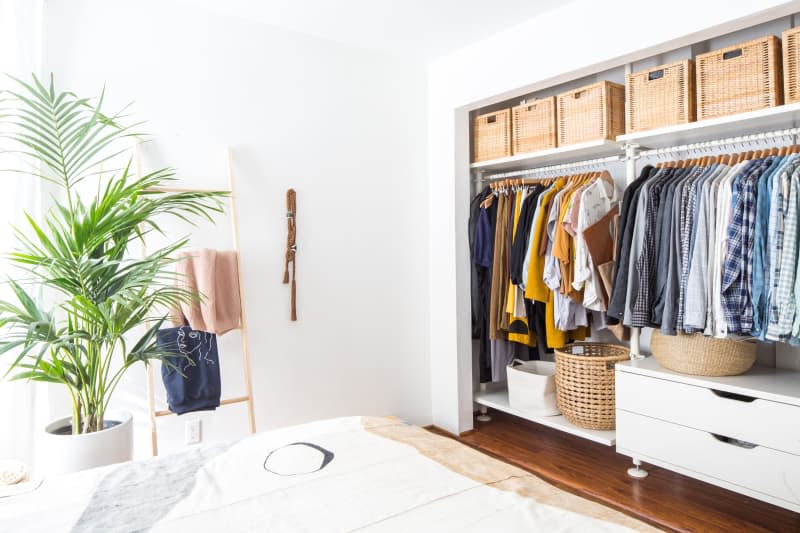
Closets
Closets can be one of the most daunting areas to declutter. The thought of dealing with so many items — many of which have lots of sentimental, wishful, or guilty feelings attached to them — can feel overwhelming before you even start. However, some strategies can make the entire process smoother and help you finish what you start.
Break down the project into categories. While many other areas of the home begin with emptying an entire space, when it comes to decluttering closets, you may want to empty according to category. “Because this is a big task, let’s break it down into sections: clothes, shoes, and accessories,” recommends Jones. Even if you do decide to empty your entire closet at once, categorize items. Seeing everything you have in one category makes it easier to let go of extra items.
Decide what to keep. Moving through each clothing type category, decide what to keep, toss, sell, and donate. Set up designated spaces or, even better, containers, for each of these categories. You may need to try things on and your decisions might not always be easy. Keep in mind ideas like what makes you feel good, what makes you smile or frown, if you already have repeat items, and if it suits your current lifestyle.
Put everything you’re keeping back. Creating designated spaces for different types of items is key to an organized closet, according to Weiss. “Allocate specific areas for each clothing category, maintaining an organized and visually pleasing closet space,” she says. She even recommends closet rod organizers to ensure that hanging rods stay categorized.
Jones also suggests keeping everything sorted by category as you place items back in the closet. She goes a step further and points out that whatever kind of clothes you wear daily should be in the front of the closet, easily visible and accessible. If you have room in your main closet to store special-occasion clothing, stash them in the back or somewhere else out of the way.
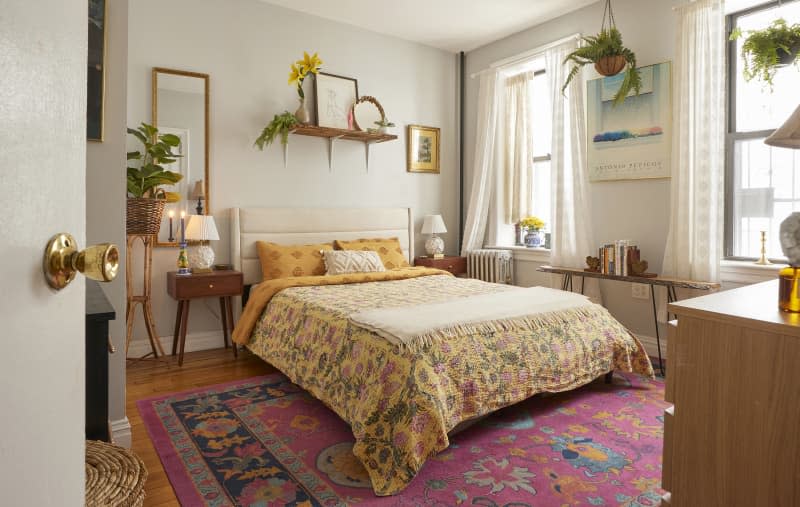
Bedroom
A decluttered and organized bedroom has a big impact on the quality of your relaxation and sleep. But the bedroom can quickly become cluttered with things like clothes, dishes from drinks and midnight snacks, half-unpacked suitcases, and laundry in various stages of completion. On top of this, it’s easy to shut the door on the mess in the bedroom and because it’s such a private room, it’s often the last priority when it comes to decluttering.
Take out items that don’t belong. Often, a cluttered bedroom is full of things that don’t belong there. This can be the quickest kind of clutter to deal with. Grab a laundry basket or box and pick up everything that belongs in a different room, and then set it outside the bedroom to deal with later.
Clear surfaces. Next, clear your bedroom surfaces of anything left that does belong in the bedroom and quickly put it where it goes. This way, when you move on to the following step, you won’t be dealing with random objects that were left out. So put the lotion in your drawer, hang your robe on the hook of the door, and take care of those clean clothes you need to fold and put away.
Work in small areas. “Don’t feel pressured into decluttering your bedroom at once. Start small by choosing one drawer, one dresser, or one nightstand at a time,” says Weiss.
Empty. Once you’ve decided on an area to tackle, empty the whole space out. Taking one item at a time, decide what to keep, donate, and toss.
Categorize. After you’ve thinned out your belongings, categorize everything by type. You may have a to-be-read pile of books, personal care items you like to keep in the bedroom, and clothing that you keep in dressers.
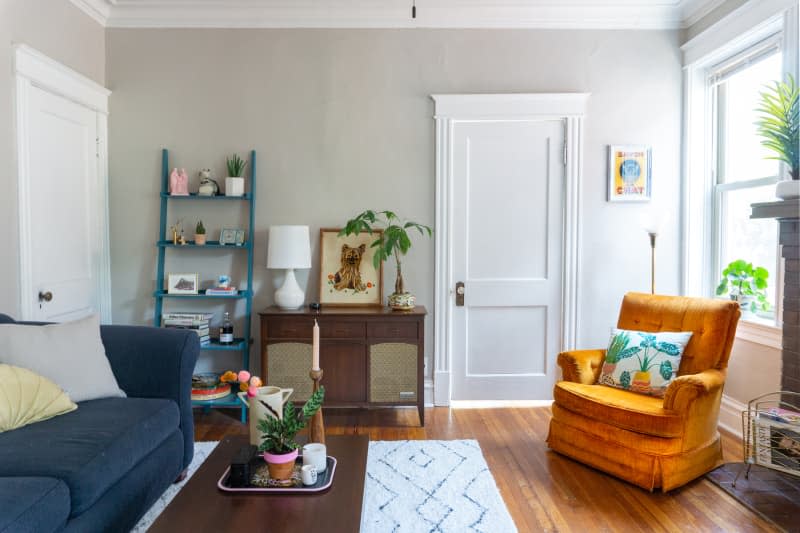
Living Room
The living room is often home to many different types of items, which can make decluttering feel tricky. But sticking to categories and decluttering in smaller bursts can keep the job manageable.
Choose a micro-area. Weiss is a fan of choosing smaller spaces to declutter one at a time, and the living room is no exception. “Start with a micro-area like one shelf on a bookshelf, a whole bookshelf, or a cabinet in the living room. Starting small will help avoid burnout,” she says.
Create a blank space. Once you’ve picked which area to tackle, empty it. For example, Weiss shares, “Begin the living room decluttering process by clearing shelves and entertainment centers, creating a blank canvas for your newly clutter-free space.”
Decide what to keep. Now it’s time to deal with what you’ve emptied. “Thoughtfully assess decorative items, books, and electronics, categorizing them into keep, donate, or discard piles,” says Weiss. Make sure you prepare space or containers for each category before you begin. Work methodically item by item, deciding what stays and what goes.
Categorize and place. After you’ve assessed your living room items, Weiss recommends: “Sort the remaining items into categories and assign specific areas for those categories. Try to strategically place your items. For example, keep TV remotes near the couch so it is easy to find and easy to put back when watching TV.” This type of strategic placement of your items not only makes your living room activities run more smoothly, but also helps ensure your newly decluttered space stays orderly.
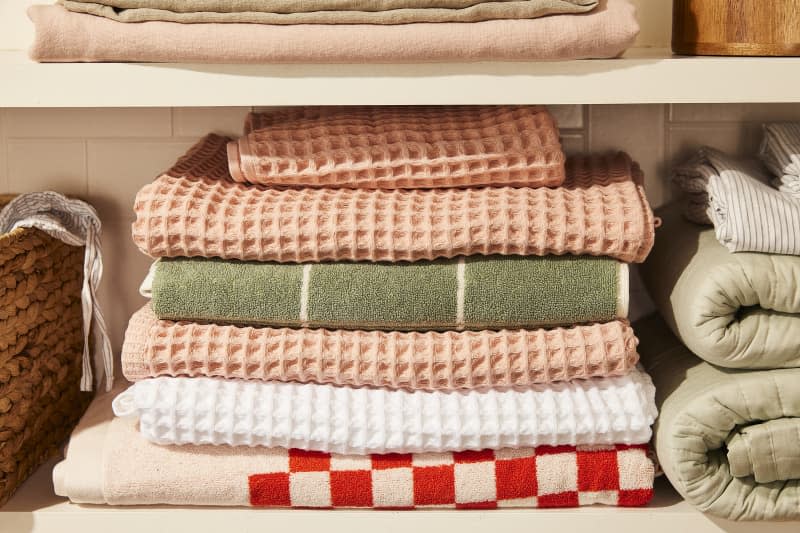
Other Areas to Declutter
Applying similar principles to additional areas of your home can help you create peaceful, functional spaces in other rooms. Ride the momentum of decluttering your main living areas to tackle additional rooms.
Dining room
Home office
Linen closet
Coat closet
Playroom
Laundry room
Garage
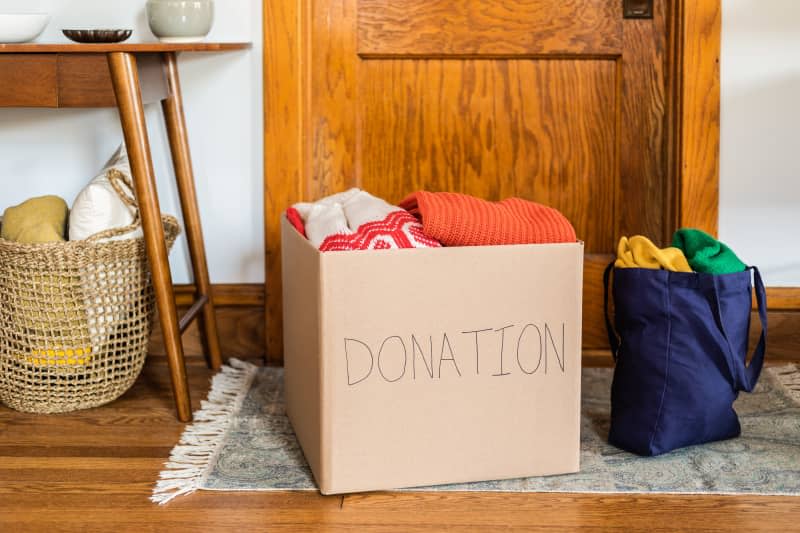
What to Do with Things You’ve Decluttered
Decluttering your spaces feels amazing. Every area you’ve addressed is more functional and contains only what you need and love, and even looking at it feels peaceful. But don’t stop here! Be sure to deal with the clutter that you’ve removed so it doesn’t become clutter somewhere else in the house. After decluttering your spaces (as soon as possible!), make it a point to decide what to do with what you’ve cleared out.
Sell. You can make some cash by selling items you no longer need or want. Just be careful that items you intend to sell don’t become another source of clutter and stress. List items as soon as possible and decide on a deadline for donation if items haven’t sold. Apps and sites like Poshmark, Mercari, eBay, and ThreadUp make the process straightforward. Local options like Facebook Marketplace are great for larger items or if you want to avoid dealing with shipping.
Donate. “Donating is a great way to give your items new life and let someone else enjoy them as much as you once did,” says Jones. “It is always helpful to have a list of charities that you are passionate about — especially if they accept donations of clothing and household goods, such as Goodwill, Salvation Army, or Habitat for Humanity ReStore.”
Recycle. Before you put your discarded items in the trash, see if there’s anything that can be recycled. For example, “Old clothes can be recycled through clothing and textile recycling companies,” points out Weiss.
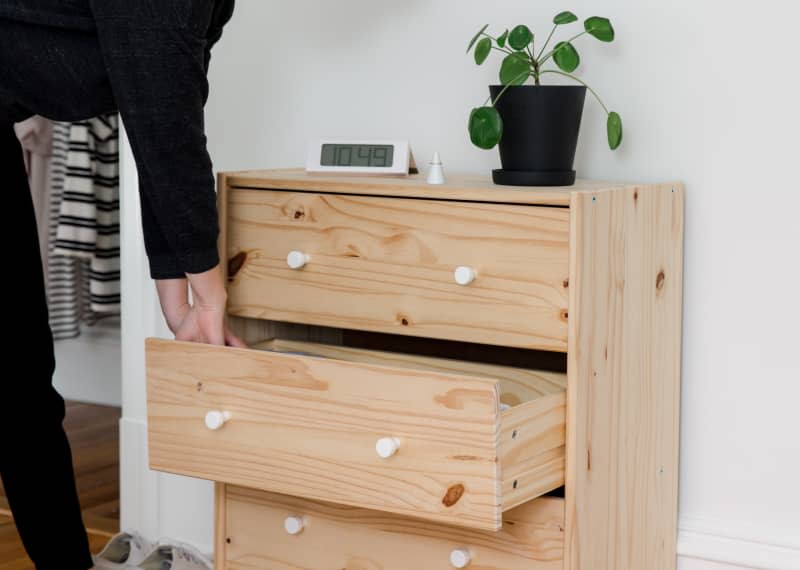
Additional Decluttering Tips
Your home is not a storage unit. Try to keep only what you need in the actual life you’re living right now.
Everything you keep costs you something. Keep in mind that every single item you own is something you have to store, clean, and maintain. Make sure it’s worth it.
Give yourself permission to buy again. If the fear of needing something again in the future makes you hang on tight, permit yourself to buy it later.
Touch it once. Practice putting something in its place when it’s in your hand rather than putting it down to deal with later. This keeps clutter out of sight.
Keep only the best, favorite, and necessary in each category of items.
Only keep that which you “know to be useful or believe to be beautiful,” as William Morris said.
Only keep what “sparks joy,” as Marie Kondo instructs.
Recognize that gifts have fulfilled their purpose. You don’t have to keep something just because someone gave it to you.
Keep a box in your closet for easily tossing in clothes you no longer need to keep.
Practice one-in-one-out. Whenever you bring something new into your home, get rid of at least one thing.
Use the 90/90 rule. If you haven’t used the item in the last 90 days and you won’t use it in the next 90 days, out it goes.
Add washi tape to items in your kitchen or any other space. When you use the item, take the tape off. Anything with tape on it after 6 months gets donated.
Declutter by small area. Choose small spaces (like one drawer or shelf) to declutter for small wins and big decluttering momentum.
Go on a decluttering binge. Grab a box or bag and walk around the house, adding as many items as you can to donate or toss.
Try the “ex-test.” Is the item important enough to you that you’d contact an ex to come pick it up? If not, say goodbye.
Ask yourself if you’d buy it now. Would you buy the item if you were shopping now? If not, get rid of it.
Try the hanger trick to cull your clothing collection. Hang your clothing backward and only turn it the right way if you wear it. Whatever is still backward after six months gets donated.
“Shop” for others. See what clothing, books, kitchen supplies, etc. you can pass along to someone who needs them.
Pretend you’re moving. If you were moving, would it be worth packing? If not, let it go.
Create paper categories. Designate all papers as either shred, file, or recycle so that paper piles don’t accumulate.
Try the 10 percent method. Collect a category of items and reduce the amount by 10 percent.
Set a timer. When decluttering, decide ahead of time how much time you will spend, even if it’s just 10 minutes.
Remember what you gain by letting go. Getting rid of things gives you time, energy, and breathing space.
Limit yourself. Set a limit on how much space you’ll take up with that one category of items.
Don’t buy containers until you purge. This keeps you from organizing items that you would do better to declutter.
If you don’t like it now, you won’t later. If you never liked something, get rid of it.
Don’t keep anything just because it’s valuable or you’ve had it for a long time.
Use the Amazon box method. Use your empty Amazon box as a container for decluttering.
Remember the sunk cost fallacy. Having something for a long time might make it feel important, but that doesn’t necessarily mean it is.
Try hushing a room. This strategy involves taking everything out of a room or space and only putting back what you truly love or need. Get rid of everything else.